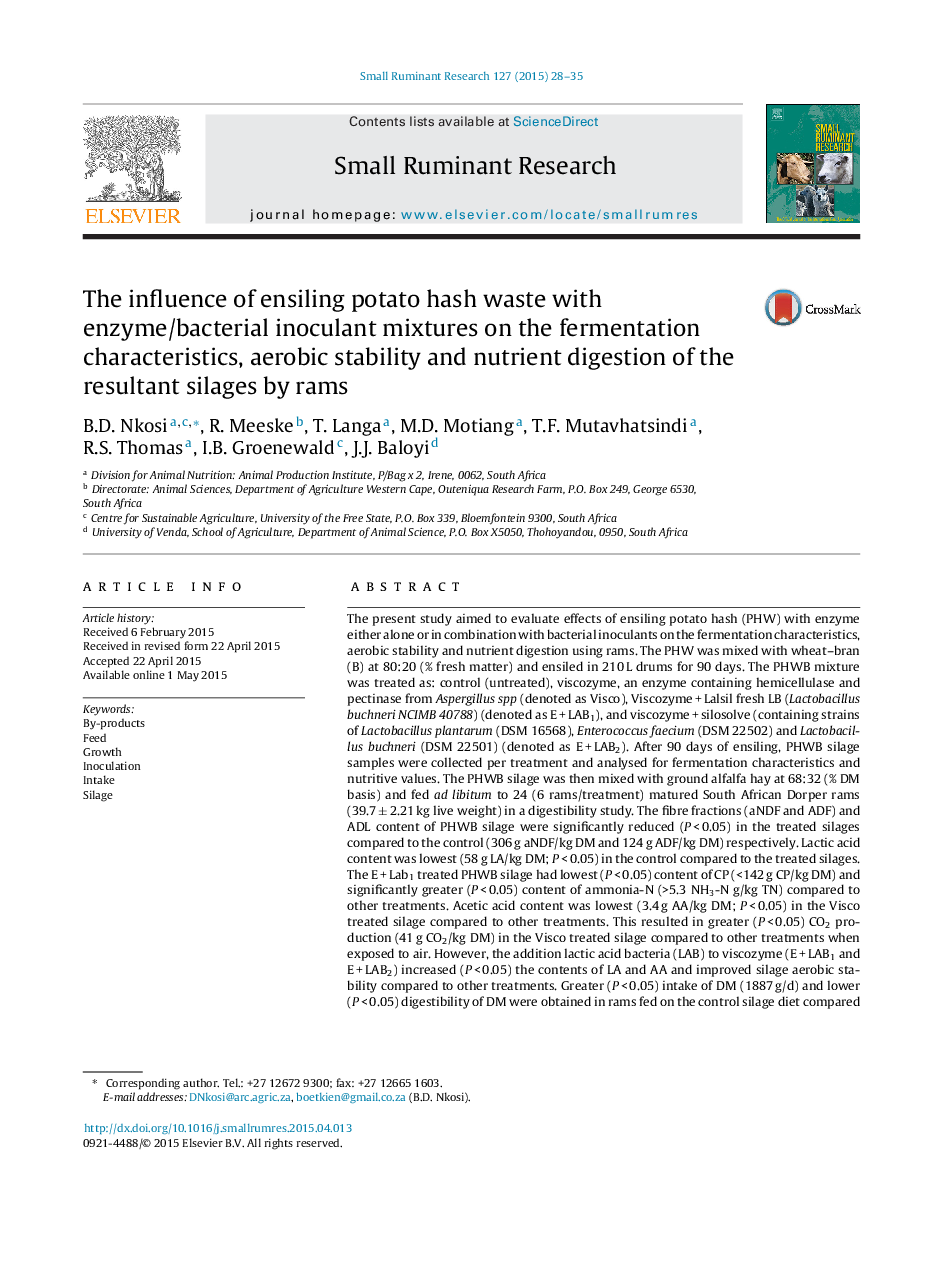| Article ID | Journal | Published Year | Pages | File Type |
|---|---|---|---|---|
| 2456915 | Small Ruminant Research | 2015 | 8 Pages |
Abstract
The present study aimed to evaluate effects of ensiling potato hash (PHW) with enzyme either alone or in combination with bacterial inoculants on the fermentation characteristics, aerobic stability and nutrient digestion using rams. The PHW was mixed with wheat-bran (B) at 80:20 (% fresh matter) and ensiled in 210 L drums for 90 days. The PHWB mixture was treated as: control (untreated), viscozyme, an enzyme containing hemicellulase and pectinase from Aspergillus spp (denoted as Visco), Viscozyme + Lalsil fresh LB (Lactobacillus buchneri NCIMB 40788) (denoted as E + LAB1), and viscozyme + silosolve (containing strains of Lactobacillus plantarum (DSM 16568), Enterococcus faecium (DSM 22502) and Lactobacillus buchneri (DSM 22501) (denoted as E + LAB2). After 90 days of ensiling, PHWB silage samples were collected per treatment and analysed for fermentation characteristics and nutritive values. The PHWB silage was then mixed with ground alfalfa hay at 68:32 (% DM basis) and fed ad libitum to 24 (6 rams/treatment) matured South African Dorper rams (39.7 ± 2.21 kg live weight) in a digestibility study. The fibre fractions (aNDF and ADF) and ADL content of PHWB silage were significantly reduced (P < 0.05) in the treated silages compared to the control (306 g aNDF/kg DM and 124 g ADF/kg DM) respectively. Lactic acid content was lowest (58 g LA/kg DM; P < 0.05) in the control compared to the treated silages. The E + Lab1 treated PHWB silage had lowest (P < 0.05) content of CP (<142 g CP/kg DM) and significantly greater (P < 0.05) content of ammonia-N (>5.3 NH3-N g/kg TN) compared to other treatments. Acetic acid content was lowest (3.4 g AA/kg DM; P < 0.05) in the Visco treated silage compared to other treatments. This resulted in greater (P < 0.05) CO2 production (41 g CO2/kg DM) in the Visco treated silage compared to other treatments when exposed to air. However, the addition lactic acid bacteria (LAB) to viscozyme (E + LAB1 and E + LAB2) increased (P < 0.05) the contents of LA and AA and improved silage aerobic stability compared to other treatments. Greater (P < 0.05) intake of DM (1887 g/d) and lower (P < 0.05) digestibility of DM were obtained in rams fed on the control silage diet compared to those fed the treated PHWB silage diets. The E + LAB1 and E + LAB2 treatments improved (P < 0.05) nutrient digestion, nitrogen (N) retention and energy balance in rams compared to control treatment.
Related Topics
Life Sciences
Agricultural and Biological Sciences
Animal Science and Zoology
Authors
B.D. Nkosi, R. Meeske, T. Langa, M.D. Motiang, T.F. Mutavhatsindi, R.S. Thomas, I.B. Groenewald, J.J. Baloyi,
